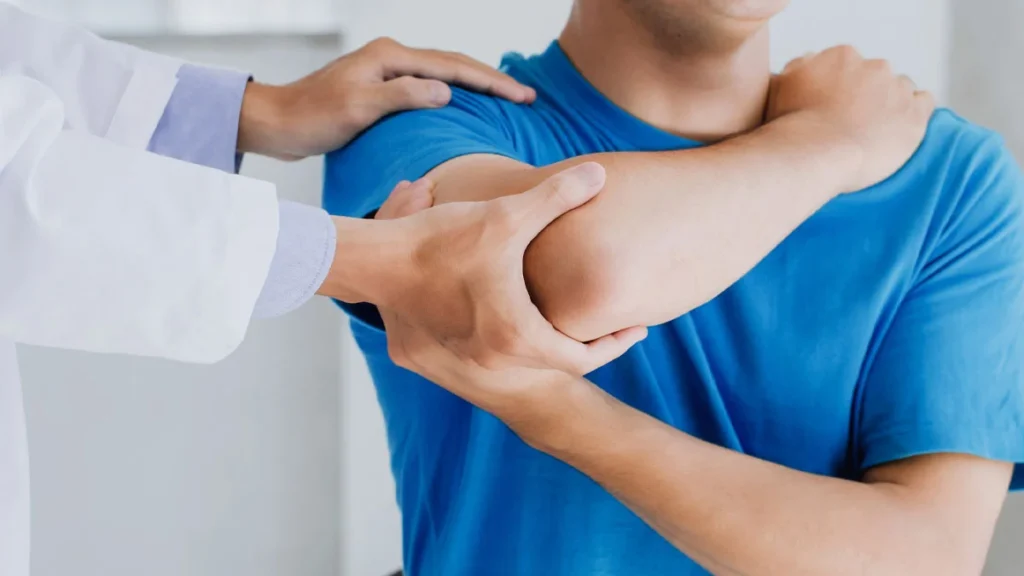
Everything You Need to Know About Tennis Elbow
Tennis elbow, or lateral epicondylitis, occurs when the tendons that attach the forearm muscles to the outside of your elbow become inflamed, torn or damaged.
Despite the name, you don’t actually have to play tennis to develop this repetitive strain injury. Any activity involving repeated twisting or overuse of the forearm and wrist can trigger those fiery elbow pangs.
While this painful condition is indeed no fun, the good news is that with a little knowledge and the right management approach, you can find sweet relief. In this blog, we will explore everything you need to know about tennis elbow.
Table of Contents
ToggleSymptoms of Tennis Elbow
If you’ve started experiencing any of the following signs, tennis elbow may be to blame:
- Stabbing pain that worsens when gripping objects or bending your wrist back
- Forearm muscle weakness that makes simple lifting or turning tasks difficult
- Swelling, bruising, or throbbing around the outer elbow
- “Clicking” or grating feelings with elbow movements
And unlike many other injuries that stick to one side, tennis elbow can actually develop in either arm – meaning you’re not even safe switching hands to alleviate the pain!
Common Causes
While many assume tennis elbow is just caused by overdoing it on the court, there are actually quite a few culprits that can land you in this world of hurt:
- Repetitive wrist and arm motions (often work-related): Think jobs like plumbing, painting, carpentry, etc. where you’re constantly gripping and rotating.
- Improper technique with racket sports: Using a tennis, squash, or racquetball racket with a handgrip that’s too small can wreak havoc.
- General overuse: Weekend warriors taking on too much physical activity too quickly without easing in.
- Direct trauma: Getting whacked or bumping that outer elbow area a little too hard.
Age is a risk factor too since tendons become more prone to tearing and injuries as we get older and less flexible.

How to Prevent Further Elbow Suffering
While tennis elbow can be agonizing once it sets in, the good news is that there are some easy preventative steps we can take:
- Pay attention to your swing technique and equipment fit: Using the proper technique and appropriately sized gear (like racket grips) can prevent undue tendon strain.
- Mix it up with your exercise routine: Diversifying your regimen helps avoid overworking certain muscle groups.
- Start slow and ease into more intense activities: Don’t go from total couch potato to weekend tennis marathon warrior.
- Always warm up and stretch: This improves flexibility and range of motion before exercising.
- Listen to your body: If you’re experiencing elbow or forearm pain, don’t try to just “push through it.”
When to See a Doctor
For mild cases of tennis elbow, self-care strategies like icing the area, taking over-the-counter anti-inflammatory meds, and doing gentle stretches may be enough to improve symptoms within 2-3 weeks.
However, if your elbow pain is severe and persists for longer than 3-6 weeks even with self-treatment attempts, it’s definitely time to see a doctor or physical therapist. They can properly evaluate the injury and determine the next steps.
Conclusion
Look, we know how demoralizing and disruptive ongoing tennis elbow pain can be, but don’t lose hope. By catching it early, resting that elbow, using proper technique, and getting appropriate treatment if it persists, you can get those tendons calmed down.
So stay vigilant about warning signs, be diligent about prevention, and never be afraid to talk to your doctor if the discomfort becomes too much to bear.
If you want to know more about tennis elbow, schedule an appointment at Hale Clinics, which provides the best Tennis Elbow Treatment in Mohali. With the right management plan, you’ll be back to swinging, gripping and twisting your elbow with ease.
FAQs
Q1. What causes tennis elbow?
Ans. Tennis elbow is typically caused by repetitive wrist and arm motions, improper technique, general overuse of the forearm muscles, or direct trauma to the outer elbow area.
Q2. Do you have to play tennis to develop tennis elbow?
Ans. No, you don’t actually have to play tennis to develop this condition. Any activity involving repeated twisting or overuse of the forearm and wrist can trigger tennis elbow.
Q3. What are the symptoms of tennis elbow?
Ans. Common symptoms include stabbing pain on the outside of the elbow that worsens with gripping or bending the wrist back, forearm muscle weakness, swelling or bruising around the elbow, and a clicking or grating sensation with elbow movements.
Q4. How can I prevent tennis elbow?
Ans. Prevention tips include using proper technique and equipment fit for racket sports, varying your exercise routine, easing into intense activities slowly, warming up and stretching before exercise, and listening to your body’s pain signals.
Q5. When should I see a doctor for tennis elbow?
Ans. You should see a doctor if your elbow pain is severe and persists for longer than 3-6 weeks despite trying self-care measures like icing, anti-inflammatory medication, and gentle stretching.
